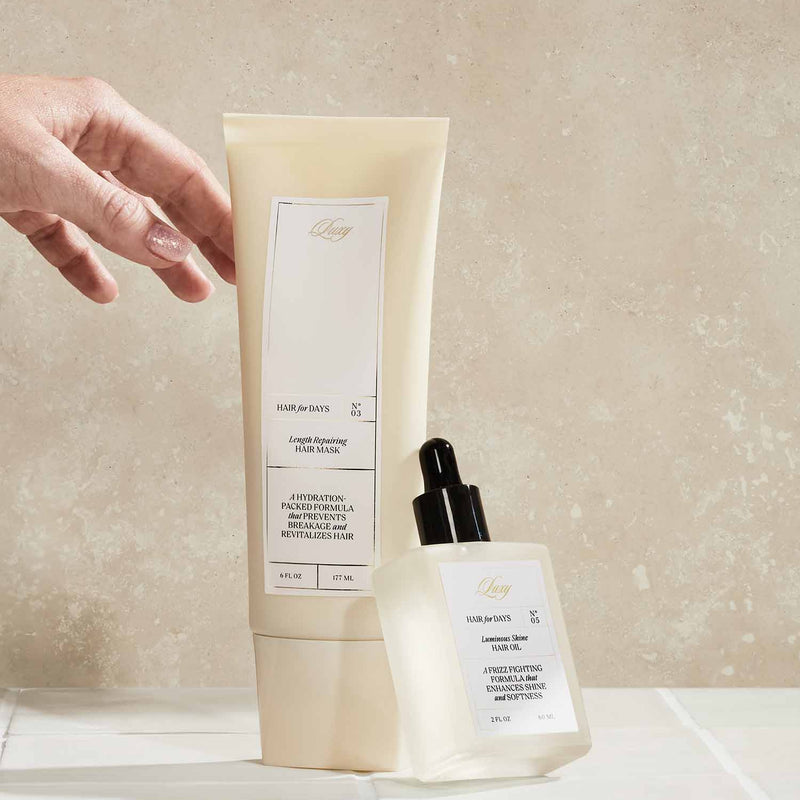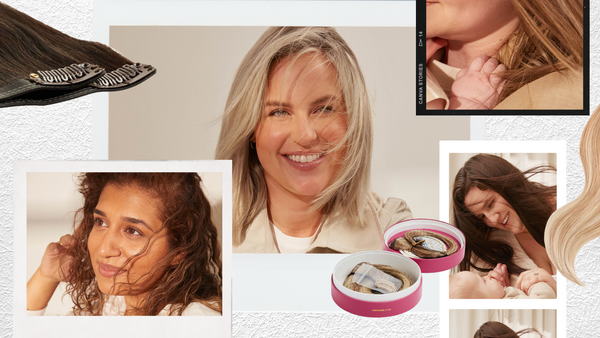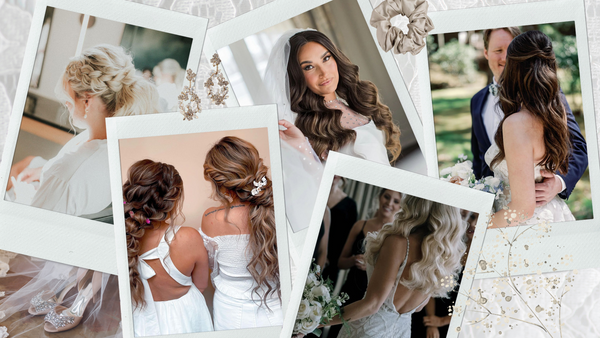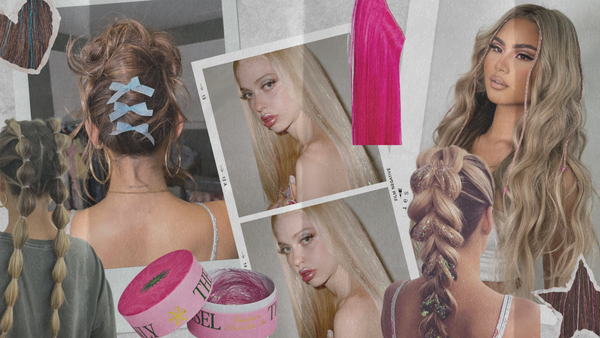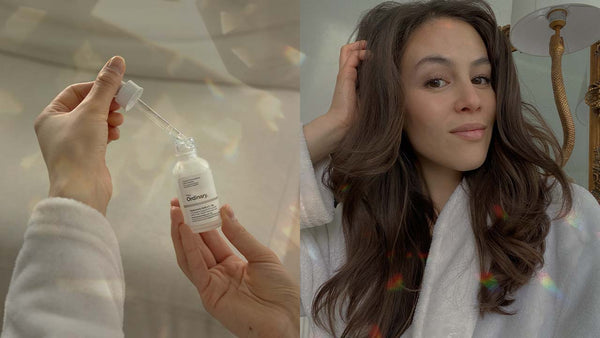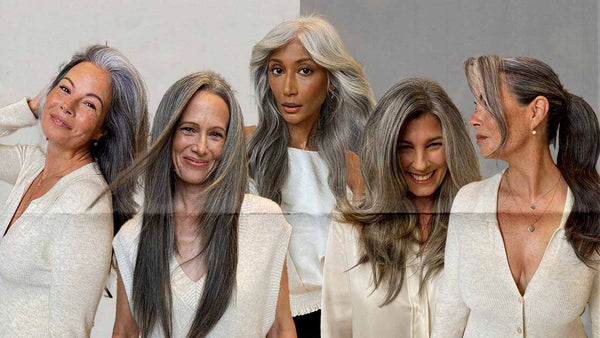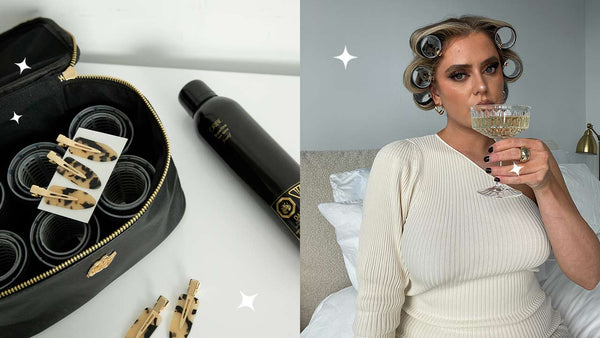Frizzy hair. We've all been there and we all know the struggle. Almost everyone has experienced that moment where you catch a glimpse of yourself in a storefront window only to be stared back at by what can only be described as a lions mane. Whether it’s the humidity or heat damage, or even for seemingly no reason at all, we’ve all experienced a moment where our hair went all Hermione Granger on us at the worst possible time.
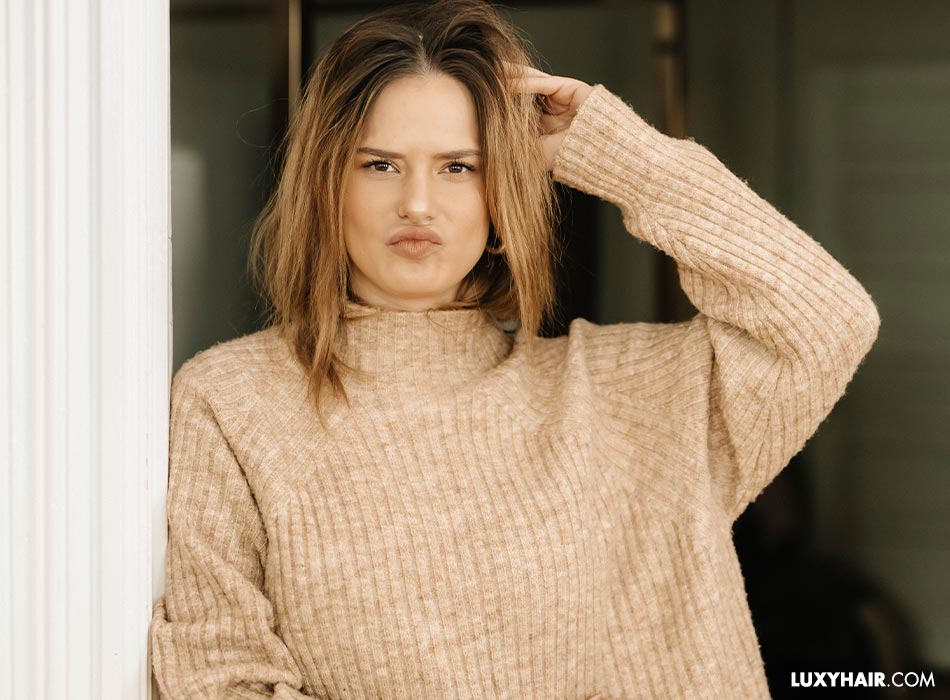
If this scenario of frizzy hair is all too familiar to you, and you’re wondering how to deal with it, the first step is to understand what’s causing the frizz in the first place so that you can take the appropriate precautions.
If you've ever asked found yourself asking "why does my hair get frizzy?", "how can I get rid of frizzy hair?" or "what are the dos and don’ts for frizzy hair?", we're here to help. We're spilling the tea on all of our favorite frizzy hair tips and tricks to fighting frizz so that you can enjoy smooth, shiny, frizz-free hair. You’re welcome.
Before we get into it, check out the video below for a crash course on how to tame frizzy hair.
What is frizzy hair?
Frizz refers to the strands of hair that stick out from the rest of your hair—it’s the smaller, dryer strands of hair that just won’t stay put. Frizz tends to stand up or curl, and adopts a different type of texture from the rest of your locks.
Alternatively, the top urban dictionary definition of frizz is “A type of hair invented by the devil himself. Causes your hair to do whatever it chooses, including morning hair in the afternoon. Mostly your hair is uncontrollable and will do the exact opposite of what you want it to do. It can sometimes be tamed if you have the patience to blow-dry it, mousse it, straighten it, hairspray it, and then tie it back.”
To be fair, this isn’t entirely untrue.

Types of frizzy hair
Generally speaking, frizz is hair that diverts from the natural pattern of your hair, as it sticks up irregularly from the rest of your locks. That said, there are different variations of frizzy hair that one may experience:
Surface frizz
Surface frizz is frizz that occurs only on the outside of your hair, and tends to appear like static all around your locks.
Halo frizz
Halo frizz refers to frizz that only appears on the very top part of your hair. The name comes from how this frizz provides the illusion of a crown around the top of your hair
In-the-curl frizz
This is frizz that appears, quite literally, inside your curls (or wavy strands of hair). This frizz tends to make curls look unkempt and undefined.
Frizz at the ends
This refers to the frizz that occurs at the tips of your hair, kind of like split ends. This frizz tends to manifest as dry, brittle strands at the ends of your hair.
Pouf ball frizz
Forbes has confirmed that, yes, this is in fact the name for the frizz that overwhelms your hair and appears on top, underneath and throughout your locks. This is called pouf ball hair because, well, it results in a person looking like a pouf ball. We’ve all been there.

What causes frizzy hair
Why does my hair frizz, anyway? Before we begin talking about how to tame frizzy hair, we want to explain what makes your hair frizzy in the first place.
Humidity
One common cause of frizzy hair is humidity and excess moisture in the air. We all know that humidity and heat trigger frizzy hair, but few actually know the science behind why this happens. Admittedly, before looking into this, we didn’t know either. According to How Stuff Works, humidity maintains high levels of hydrogen, and human hair is incredibly sensitive to this hydrogen. This hydrogen forms a bond with your hair’s water molecules and proteins, and it’s this bond that causes your hair to frizz.
Dry Hair
Another common cause of frizzy hair is dryness. When your hair gets dried out (or is just naturally dry), it can often become frizzy. The reality is that dry hair longs for moisture, so once exposed to moisture, it tends to frizz faster than, say, oily hair. Let’s say you have dry or damaged hair and you go outside when it’s humid—what happens to your hair? The hair is dry, which means it wants to absorb all that moisture from the environment. The result? Poof! Hello, unwanted frizz.
This is also why naturally curly or wavy hair tends to frizz more easily. Since naturally curly or wavy hair has the tendency to be dry, the hair frizzes at the first sign of moisture.
Damaged hair
Damaged hair can often become frizzy, as damaged hair tends to be dry by nature. Habits like applying too much heat to your hair, colouring it too often, or even over washing and dry out your locks leading to damage and result in a frizzier ‘do.
How to tame frizzy hair
So many people with naturally curly and wavy locks struggle with how to control frizzy hair. The reality is, more often than not, frizz is just enhanced by our bad hair habits. Really, hair health is about education, research, and trial and error to find the right products.
Here are the frizzy hair tips that will help you learn how to control frizz:
1. Choose a sulfate-free, glycerin-packed shampoo.

When selecting a shampoo, look for products with glycerin listed high up on the ingredient list. The closer glycerin is listed to the top, the more concentrated it is in the product.
Glycerin helps combat frizz by penetrating the hair and hydrating it from the inside out. It is also a great humectant, meaning it absorbs that extra moisture in the air, creating a protective coating and keeping moisture trapped in.
In addition to glycerin, ensure the shampoo you’re using is sulfate-free. Sulfates are a surprisingly common ingredient in shampoo because it creates a lather.
The downside, however, is that sulfates strip natural oil from the hair and can make the hair dry, which leads to frizz. Sulfate-free shampoos maintain the hair’s natural oil levels leaving the hair with more moisture.
2. Always use conditioner.
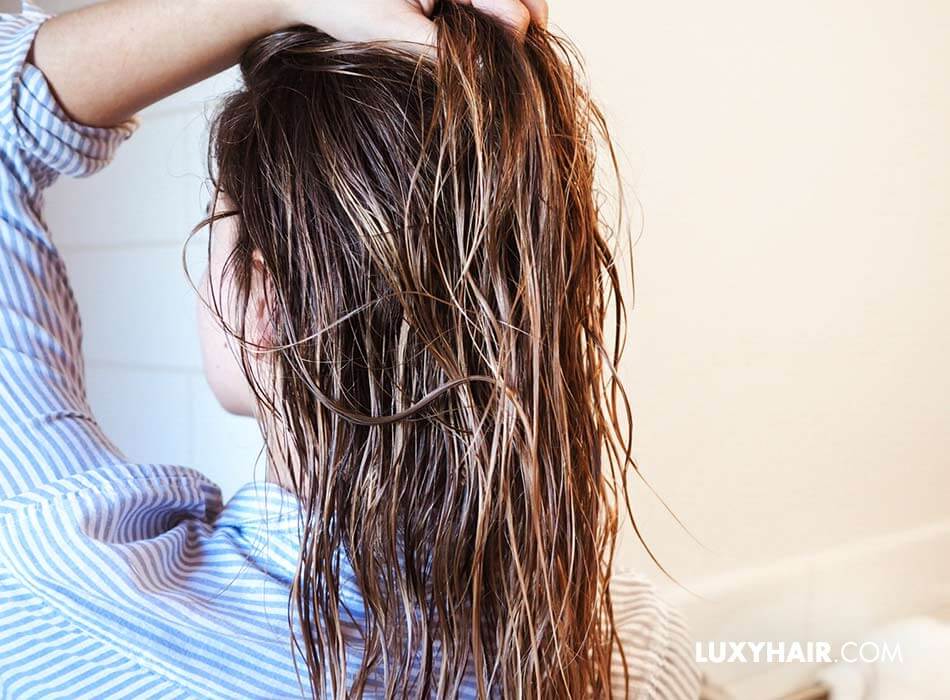
The power of a good conditioner is often underestimated. Ensure you use conditioner every time you shampoo your hair to keep the cuticle hydrated so moisture can penetrate deep into each strand.
This helps prevent the cuticle from opening up and letting in excess moisture from the environment, which will keep it smooth. When searching for a conditioner, look for a product that contains glycerin, as well as other hydrating ingredients like shea butter. Be sure to apply conditioner from the mid-lengths down to your ends and keep it away from your roots to prevent oiliness.
3. Twice a week, only use conditioner on your hair.
You might think your hair needs to be shampooed several times a week, but in reality, it actually doesn't. Every two days, apply conditioner only and skip shampoo, then rinse it out. Conditioner contains a small amount of surfactant, which is what shampoo uses to cleanse your hair.
As well, conditioners contain a small amount of oil which attaches to the oils in the hair, cleansing it away. This also called “Co-Washing” which helps keep the hair at optimum PH as you are replenishing moisture and ensuring the natural oils in your hair are not being stripped away.
4. Use a hydrating mask once a week.
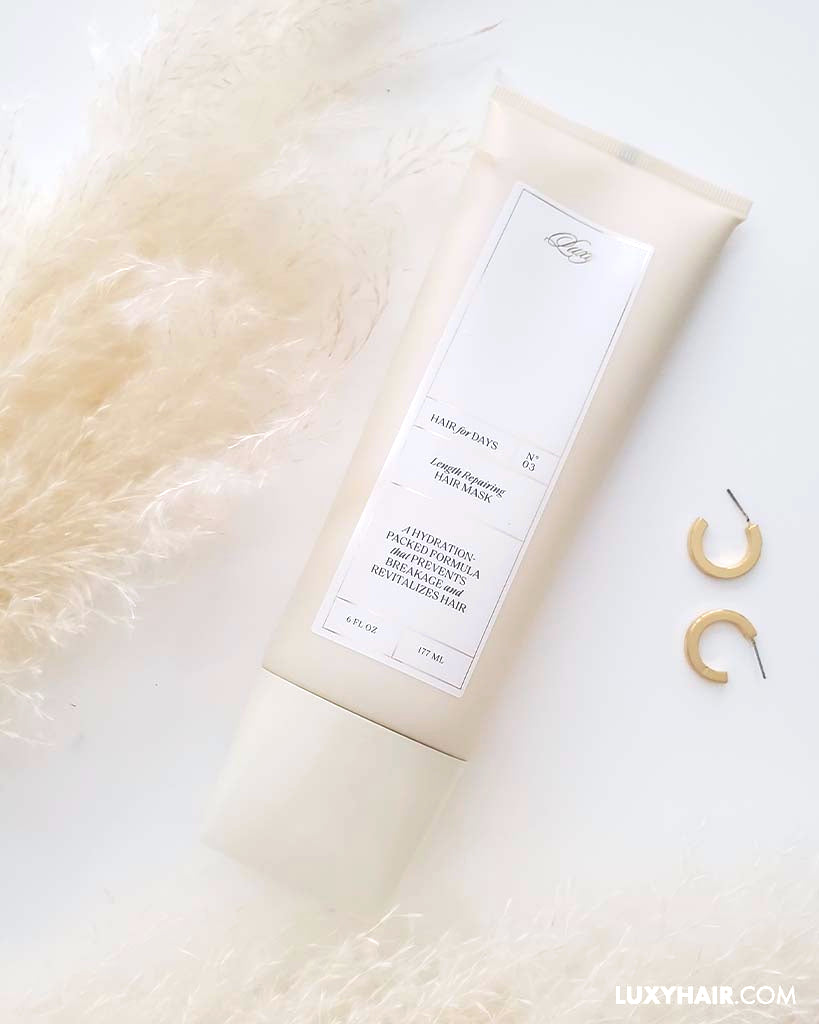
Keeping the hair hydrated helps to prevent the hair cuticle from opening up and letting in moisture, which is the biggest contributor to frizzy hair. Try doing a hair mask or a specialized hair treatment once a week to keep hair moisturized and less prone to damage from styling.
Look for products containing coconut oil or castor oil—both are amazing for hydration and will give your hair an incredible sheen. Here is a great DIY mask you can do at home with just 2 ingredients, or if you want some more options, here are 5 more hair masks. If your hair is especially dry and damaged, we recommend using a hair mask 2-3 times a week or in place of your conditioner.
5. Incorporate coconut oil and baobab oil into your hair routine.
Coconut oil has endless benefits for your hair, especially when it comes to frizz. Try to make a habit of using pure, organic coconut oil in your beauty routine. You can use it two ways; the first being as a mask.
Apply coconut oil down the length of the hair, letting it sit for a few hours or using it as an overnight treatment. The result is visibly smooth and touchably soft hair. If you’re looking to fight frizz quickly without having to rinse, apply a pea-sized amount of coconut oil onto your hands, rub together, then smooth over any flyaways as an on-the-go frizz fighter.
If you haven’t already heard of this ingredient, baobab oil is a miracle worker. This oil is pressed from the seeds of the baobab tree, which grows in southern African countries like Malawi, Kenya, and Madagascar. Amazingly, a single tree can live for over 1,000 years. Known as ‘the tree of life’, baobab has been used for its powerful health and wellness benefits for centuries in Africa. Now, it’s one of the trendiest beauty products around.
One of the main benefits of baobab oil is its many uses. A true multitasker, it can be incorporated into your skincare routine for brighter, vibrant-looking skin. It soothes dry and sensitive skin, improves skin barrier function, cleanses away impurities, and lightens dark spots. Add to your favorite moisturizer or apply the oil directly to your skin, in small amounts. It’s gentle enough that you can use it every day. Additionally, the oil is great for healing dry or brittle nails due to its high amounts of calcium.
When it comes to your hair, baobab oil is the key to achieving healthy, silky strands. If you’re looking for an antidote to dry, frizzy hair, look no further than this oil. Rich in vitamin E and Omega-3 fatty acids, baobab contains moisturizing and strengthening properties. Medical research has also found evidence that this oil can help soothe your scalp by preventing dandruff and skin flaking.
There are plenty of ways to incorporate coconut oil and baobab oil into your hair care routine. Massage it into your hair from root to tip and leave in overnight, or use it during the day as a styling oil to smooth frizz and make hair silky and glossy. You can also add a few drops to your favorite conditioner for an extra dose of moisture. Organic baobab oil and coconut oil are also the main ingredients in our Wetline products, providing omega-3 fatty acids, antioxidants and vitamin C. Whether used in a hair mask, conditioner, or hair oil, baobab oil will help keep frizz at bay.
6. Let your hair air dry 90% of the way before blow-drying.
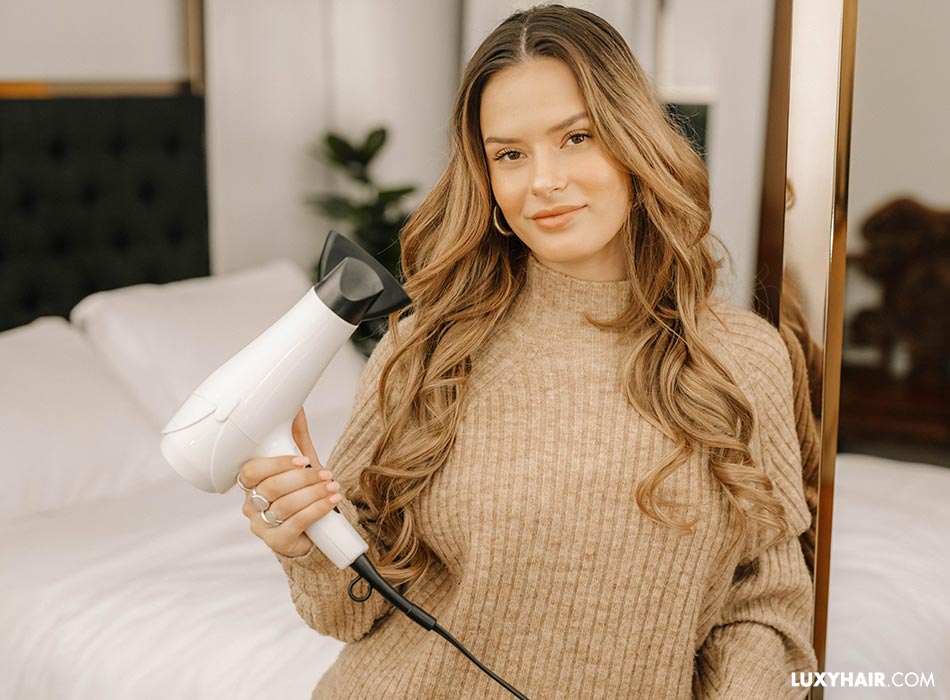
Letting your hair air dry 90% before blow-drying is a stylist's secret weapon and it is truly life changing! By letting your hair partially air dry, you are allowing it to dry without disrupting the hair strand, which helps to keep it smooth.
While the heat of a blow dryer can cause damage, using a blow dryer when your hair is already mostly dry minimizes the risk. Just be sure to keep the dryer on a low heat setting and hold it 6 inches away from your hair at all times.
Also, be sure to move the dryer around consistently so that it doesn’t overheat a certain section of the hair and cause damage.
7. Use a diffuser when blow-drying.
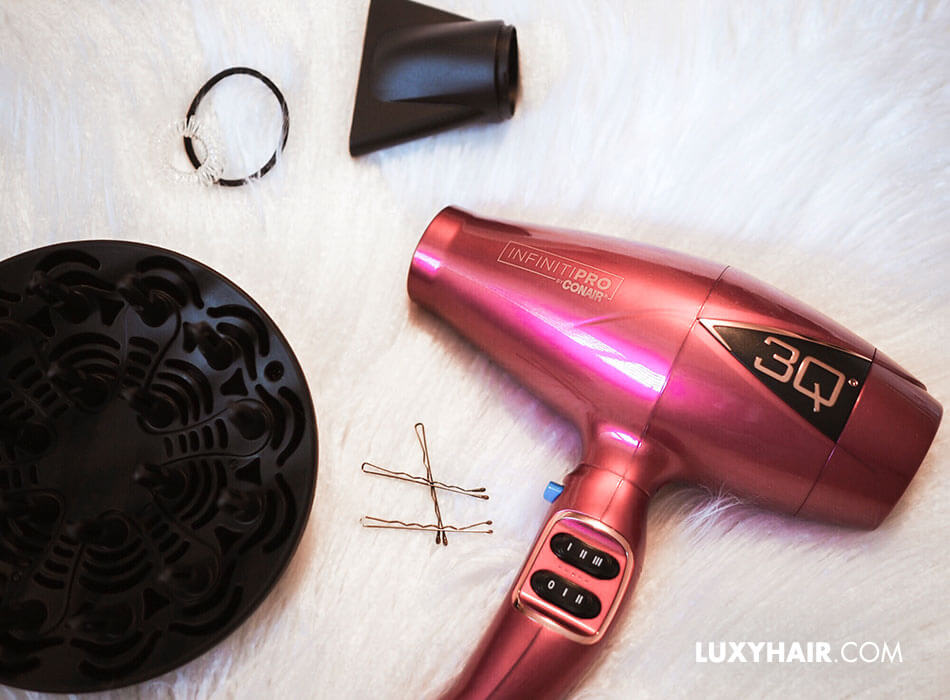
Knowing how to properly blow dry the hair without creating frizz is an art form, but when you master it, the results are always worthwhile. One of our go-to tips when blow drying, especially for wavy or curly hair, is to use a diffuser.
Adding a hair diffuser extension onto your blow dryer will limit the amount of direct heat and forceful air hitting your hair, which works wonders at keeping the hair smooth. The diffuser limits your hair from moving around when you dry, which in turn, creates less friction and less frizz.
8. Use a mascara wand with hairspray.
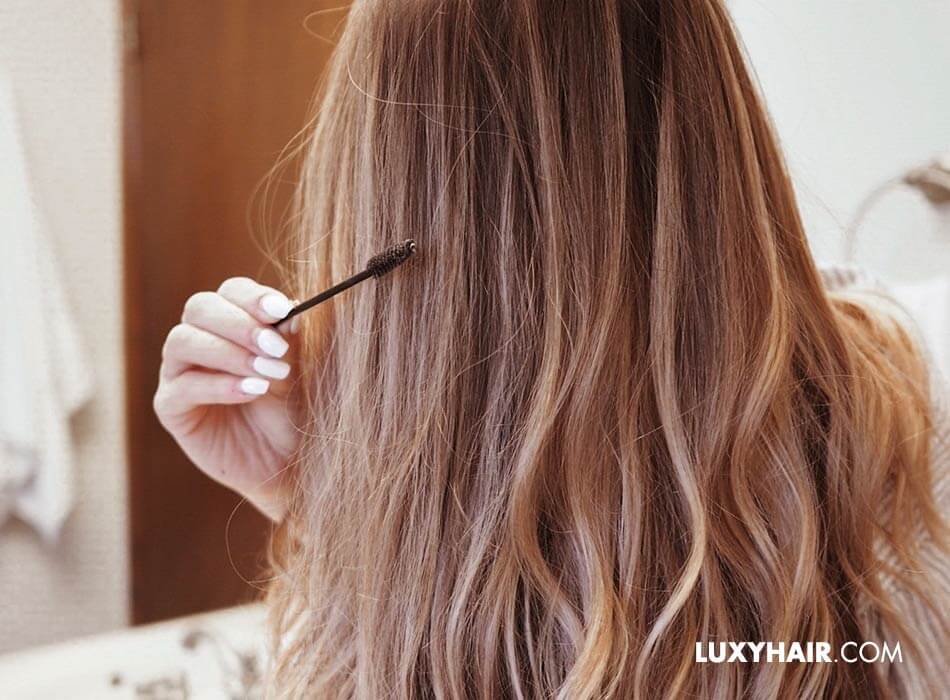
For small areas of frizz, one of our favorite tricks is to use a mascara wand and spray it with hairspray. This allows you to target certain small, unruly areas of the hair and flyaways that need to be smoothed out quickly.
This trick is one that is well-loved by many celebrities and hairstylists and has proven to be an especially useful method when on-the-go. One tip to keep in mind is to be sure to use an alcohol-free hairspray as alcohol can swell the cuticle and create even more frizz in the long-run.
9. Use a nourishing hair oil on dry ends.

If you still can’t seem to kick the frizz once your hair is blow-dried, try using a nourishing hair oil like our Luminous Hair Oil. Hair oil works to fight frizz by smoothing out the hair while simultaneously adding gloss and shine.
It penetrates deep into the hair cuticle to add moisture to dry ends and revitalize the health and vibrancy of your tresses. Drop 1-3 drops of oil onto your palm, rub together and smooth over the ends of the hair to tame flyaways and frizz.
10. Use your heat tools on a low setting.
Although it always feels like heat tools tame frizz and unruly hair once the hair is styled and smooth, the opposite actually happens if you’re using your heat tools on a super high setting.
Anything above 365 degrees has the potential to swell the cuticle, which will actually end up doing more harm than good. A safe range for your heating tools is 250 to 300 degrees to ensure minimal damage. Having patience and holding the hair on the tool longer rather than just amping up the heat will actually create a sleeker, frizz-free look in the end.
11. Trade your hair towel for a t-shirt or microfibre towel
Your hair is at its most vulnerable when it’s wet, so making the wrong move when your hair is wet can potentially damage your locks. This is why it’s so important to use the right fabric when drying your wet hair.
Using the wrong fabric that’s too rough or abrasive can, literally, break your hair and cause frizzing. Avoid using rough towels to dry your hair. Instead, opt for a softer material like an old cotton t-shirt or microfiber towel.

Frizzy Hair Tips: How to Get Rid of Frizz & Prevent Frizz
The reality is that many hair types are prone to frizz; curly hair, straight hair, you name it. That said, even those who may have hair type less susceptible to frizz can still fall victim to hair damage and, in turn, frizz.
Even high quality hair extensions can frizz when not cared for properly. High quality hair extensions made from real hair are just as susceptible to frizz when exposed to humidity, and not safely protected when exposed to heat products. Consider the habits and routines that can help you control frizzy hair:
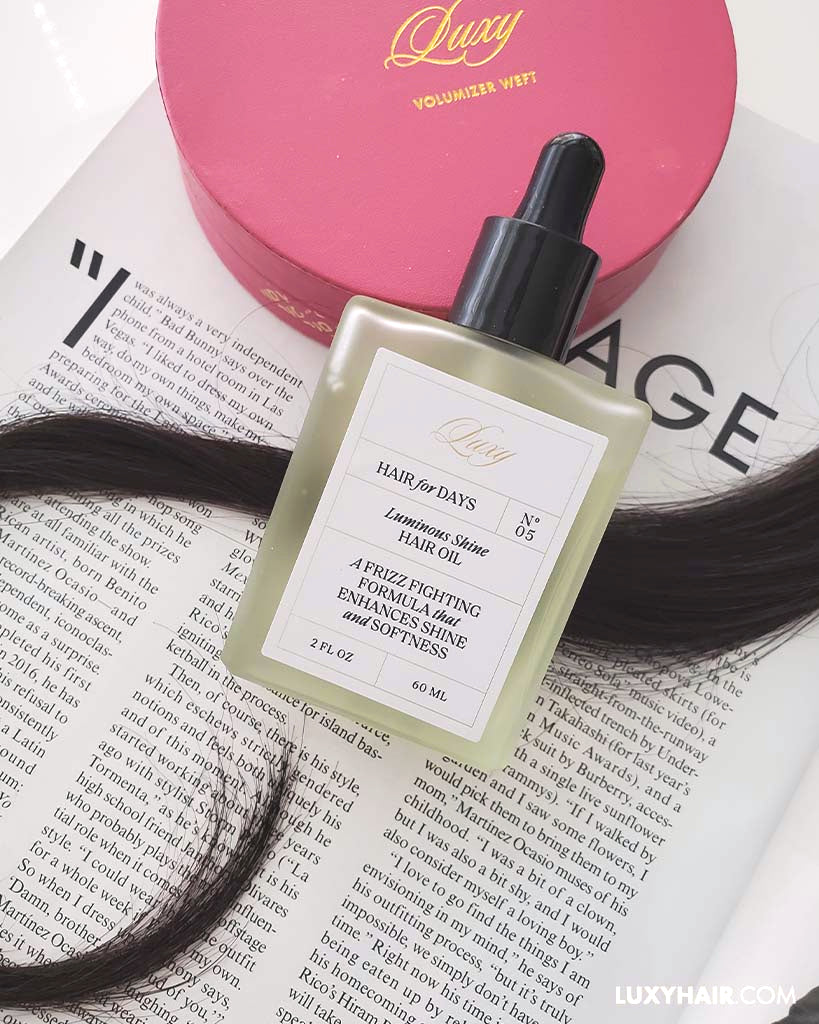
How to brush frizzy hair
We already know now that brushing your hair dry is a big no-no and that you are better off brushing your hair in the shower. Here are some tips on how to brush frizzy hair without triggering an unwanted ring of hair around your head:
Use a boar bristle brush
The best brush for frizzy hair is a boar bristle brush that has tense bristles that will detangle your hair. According to The Today Show, these brushes “promote hair health by stimulating the scalp and distributing natural oils from root to tip.” You will preferably want to get a wet brush designed for damp environments like the shower. For hair extensions, use a Loop Hair Extensions Brush, which has looped bristles, to reduce snagging and tangling.
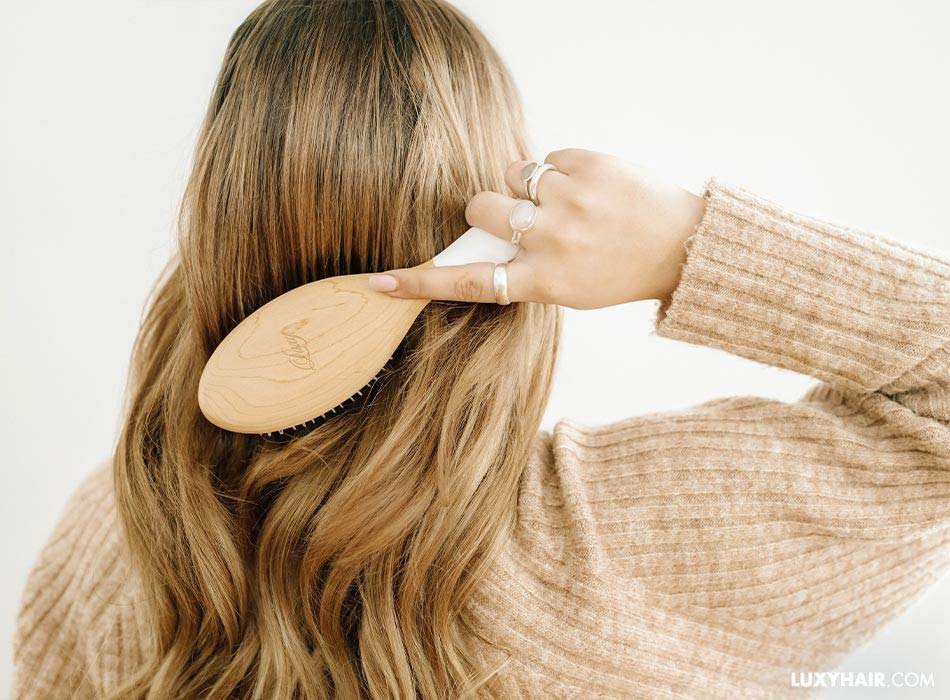
Section off your hair
Brush sections of your hair separately to make sure that your locks are thoroughly combed through and detangled.
Apply conditioner
Make sure that there’s conditioner in your hair when you brush it, as conditioner will provide more moisture and make it easier to brush your locks through.
How to style frizzy hair
A lot of people struggle to easily style their frizzy hair when they don’t necessarily have time to apply heat or do a thorough brush through. Easy ways to style your frizzy hair (and still be presentable) include:
Hair accessories
You can use accessories like scrunchies to pull back your hair, or headbands that can reduce the appearance of any halo frizz.
Hair tutorials
The Luxy Hair Youtube is a great resource if you don’t know how to style your hair. Look up some easy tutorials and you’re bound to find a couple of frizzy hair styles that work for you.
Buns
While ponytails can still showcase a lot of frizz, buns reduce the amount of frizz that may appear, and also leaves you with less visible hair to try to tame. Considering messy buns are such a trend right now, a bun with some texture (*cough* frizz) is actually an ideal casual look.
Braids
Braids are great way to work with the texture that frizz provides to hair. By braiding your hair, you can still create a unique style and get your hair out of your face.
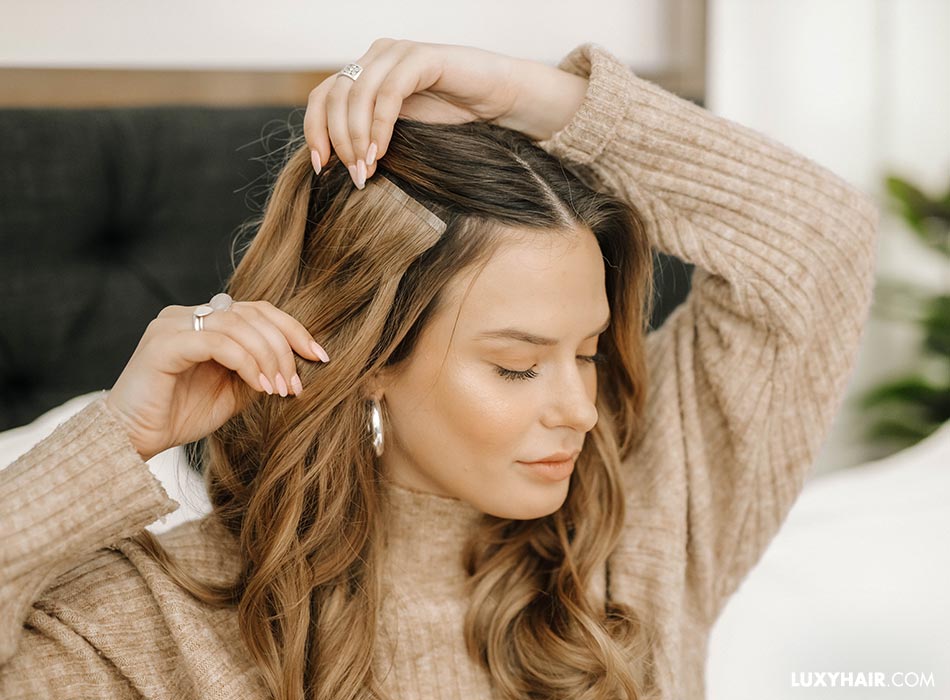
How to control frizzy hair when applying heat:
Applying heat directly to your hair for a long time when using a flat iron or blow dryer can cause your hair to get damaged and frizz. That said, healthy heated hairstyles (like most things in life) are about balance. There are ways you can style your hair using heated products without triggering intense flyaways:
Check the heat
You can control the frizz that often comes with straightening your hair by monitoring the temperature of iron. Keep your straightening iron set between 350F and 450F. That said, it's also important to not apply heat directly to your hair for too long. Run the product through your hair quickly and refrain from putting heat on a part of your hair for an extended period of time.
Avoid combing or brushing after
Brushing your hair when it’s dry before or after applying heat causes the hair cuticle to fray and can trigger frizz. instead, Finger comb your hair to work out any remaining tangles and avoid putting too much pressure on your freshly heated locks.
Use heat protectant spray
Heat protectant sprays can protect your hair from heat-related damage and impacts like frizz.
Dry shampoo
Standard shampoo is liquid based and, as a result, adds moisture to your hair. This, of course, can cause frizzing. Dry shampoos, on the other hand, are significantly drier — duh. These products alternatively help to reduce any build up of moisture and oils in the hair to keep it straight and frizz-free..
Detanglers
Detanglers aren't only helpful for removing your tangles; they can also be applied to freshly straightened hair to eliminate frizz. Detangler helps to smooth down the hair cuticle and prevent it from splitting apart and frizzing.
Reduce heat styling
If you want to apply heat to your hair to obtain a desired style, that’s totally cool— but you don't want to overdo it. Straightening and blow drying your hair every day will just damage it and contribute to more frizz, whereas more rationed use is more likely to help you maintain chic yet healthy looking locks.
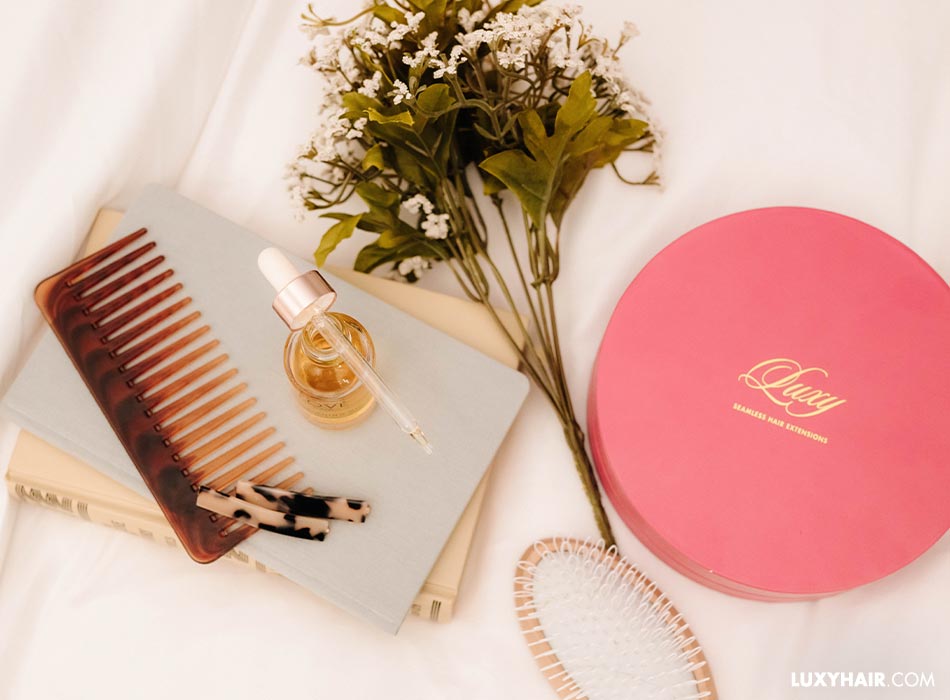
Frizzy Hair Do’s & Don'ts
What to “DO” with your frizzy hair
Frizzy hair dos:
- When you come out of the shower, towel dry your hair very gently and start brushing slowly from the bottom of your hair moving upwards. Then, blow dry your hair with a round brush. The round brush technique really helps to smooth the cuticles and take out the frizz.
- Use a soft cotton t-shirt instead of a harsh towel when drying your hair. A towel with a rougher texture will ruffle the hair cuticle and result in frizz. A soft, more malleable fabric like cotton reduces the risk of damage whilst preventing frizz.
- Use a little bit of argan oil after blow drying and spread it evenly throughout the hair to flatten frizz. If there are still some frizzy hairs left at the top, use a tiny bit of hair wax and smooth them down. Be sure to keep this in your purse so it’s handy when you are out.
-
Get a haircut or trim every 6-8 weeks. Split ends and breakage can be a major cause of unwanted frizz. A trim will eliminate the frizzy-look of breakage and revitalize a healthy, shiny mane.
- Sleep on a silk pillowcase. A standard cotton pillowcase can pull at the hair fibers and create friction while you’re sleeping, which can result in frizz and tangles in the morning. Silk, on the other hand, is a smoother, more gentle texture that keeps the hair’s moisture intact and won’t create unnecessary frizz.
- If you’re having a hair emergency when you’re out, you can just take some water and pat the hair down. It’s a temporary solution, but hey, whatever works!
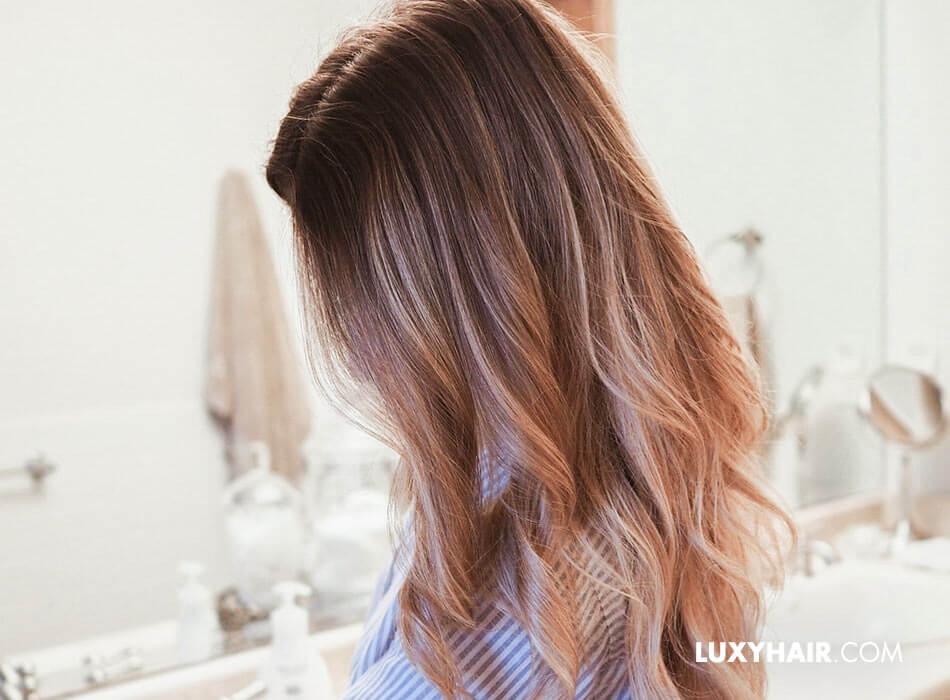
“Don’t” do this with your frizzy hair
- Don’t ever brush your hair when it’s dry. It’s just going to create a frizzy mess, especially if you have naturally or wavy hair. Instead, brush the hair thoroughly with a wide-tooth comb when the hair is damp to smooth out tangles. Brush from your ends up towards the roots to reduce the risk of damage.
- Stop feeding your hair alcohol. If you look at the ingredients of most of your products you’ll notice that most drugstore products contain alcohol, because it’s really cheap and effective for them to use. Learn more about using natural products vs. drugstore products here.
-
Don’t overprocess your hair. Heat tools, harmful bleaches, and dyes create breakage, which opens the hair cuticle and leaves room for excess moisture to enter, leading to frizz. Try to change your hair routine to use less heat, such as achieving heatless curls and avoid bleaching your hair as much as possible.
- Don’t touch your hair. So many people have the bad habit of constantly touching their hair to rearrange their locks or, in their minds, flatten their ‘do when they expect the appearance of frizz. The reality is that the more you touch your hair, the more your hair cuticle will start to part and frizz.
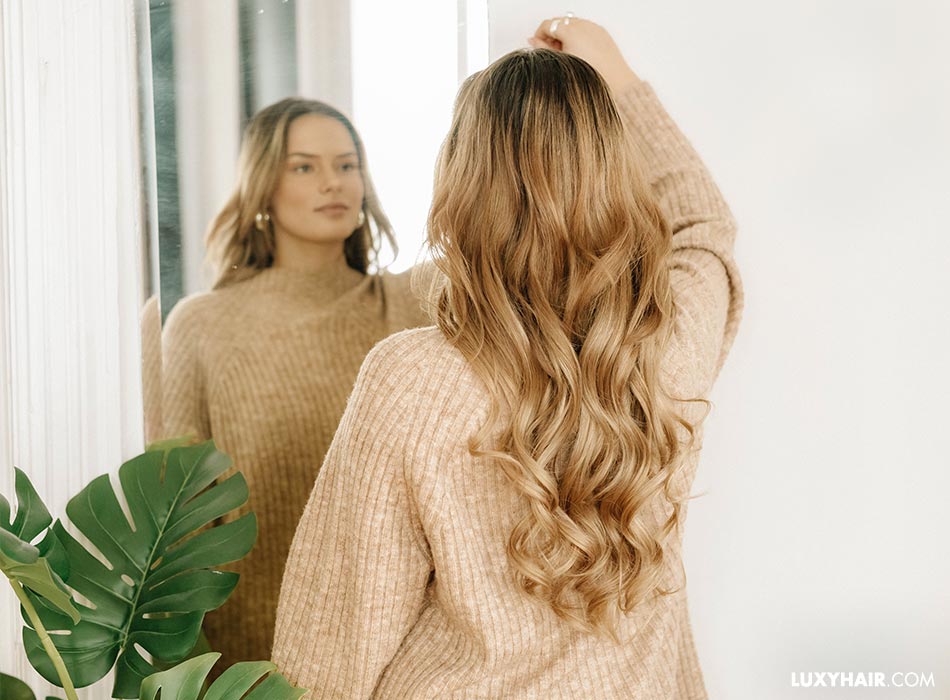
We hope these tips will help you achieve the frizz-free hair of your dreams. If you give these tips a try, be sure to let us know which worked by DMing us on Instagram. You can also reach out to us over email with any questions at [email protected].
Written by: Brittany Rodriguez


